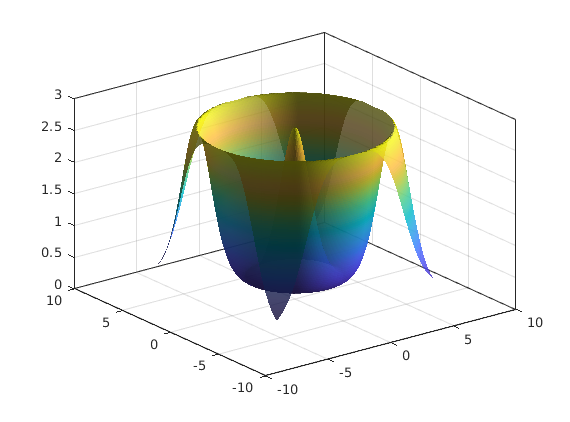Contents
Various views of meshgrid
Feb,2018
meshgrid is especially useful for 3d-graphics. Also in any computation where function defined on a 2d-mesh is required.
An easy illustration is to look at a multiplication table.
format compact close all
Using meshgrid
x=0:2 y=3:6 [X,Y]=meshgrid(x,y); [X Y] % X and Y side by side Z=X.*Y % Multiplication table
x =
0 1 2
y =
3 4 5 6
ans =
0 1 2 3 3 3
0 1 2 4 4 4
0 1 2 5 5 5
0 1 2 6 6 6
Z =
0 3 6
0 4 8
0 5 10
0 6 12
Grid of points
figure [X(:) Y(:)] plot(X(:),Y(:),'x') xlabel('x');ylabel('y') axis([-1 3 2 7]) hold on mesh(x,y,0*Z) % instead of 0*Z, can take 0*X or 0*Y grid on
ans =
0 3
0 4
0 5
0 6
1 3
1 4
1 5
1 6
2 3
2 4
2 5
2 6
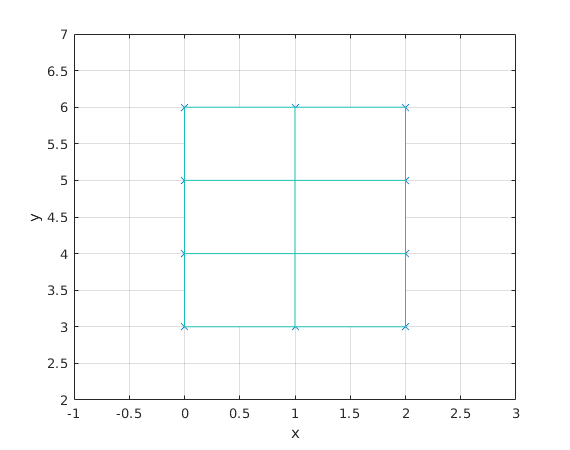
A graphic illustration
figure subplot(1,2,1) imagesc(X) title('X') axis off subplot(1,2,2) imagesc(Y) title('Y') axis off shg %
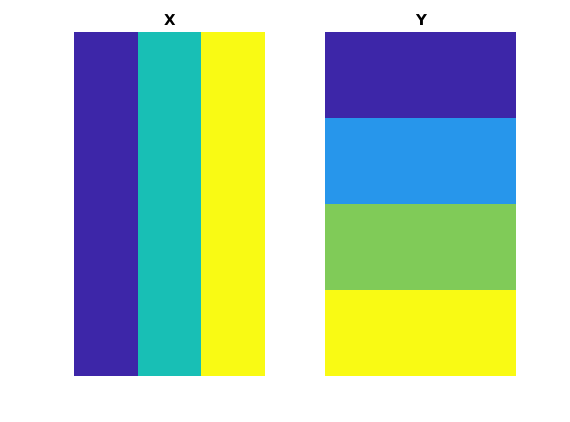
The mesh-command gave an easy way to plot gridlines: mesh(x,y,0*Z) having 2-d-axes open as above.
Look at 3d-pictures
That's where you see most uses of meshgrid
figure mesh(x,y,Z) xlabel('x-axis') ylabel('y-axis') hold on mesh(x,y,0*Z)
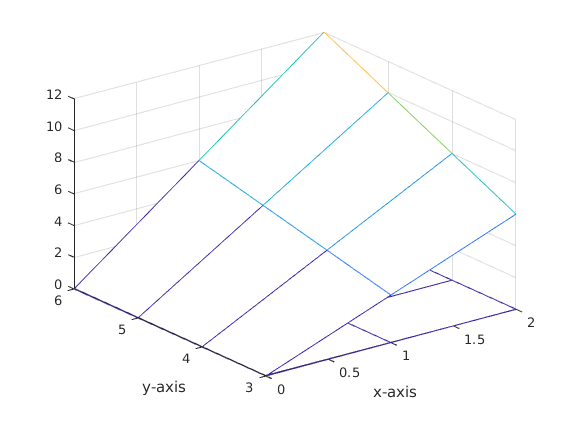
Handy ways to plot gridlines and gridpoints
The easiest way is from above: mesh(x,y,0*Z) % having 2-d-axes open as above
Add grid points and projection lines on the surface
plot3, stem3
figure plot3(X(:),Y(:),Z(:),'*') hold on plot3(X(:),Y(:),0*Z(:),'o') mesh(x,y,Z) grid on stem3(x,y,Z) shg % Rotate with your mouse.
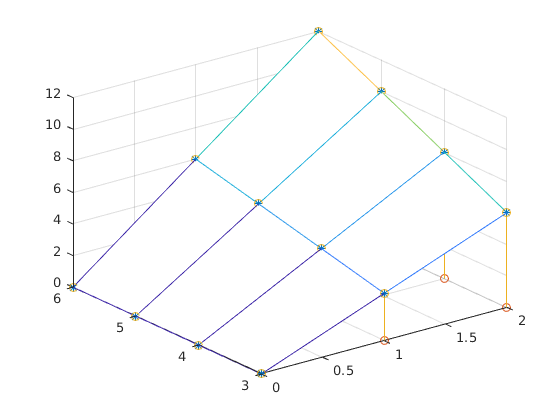
Another idea is for 2d-gridlines is to use just ordinary plot
Including some repetition from above. Look at X and Y side by side again:
figure % New graphics window plot(X,Y,'k') % Matlab operates rowwise.
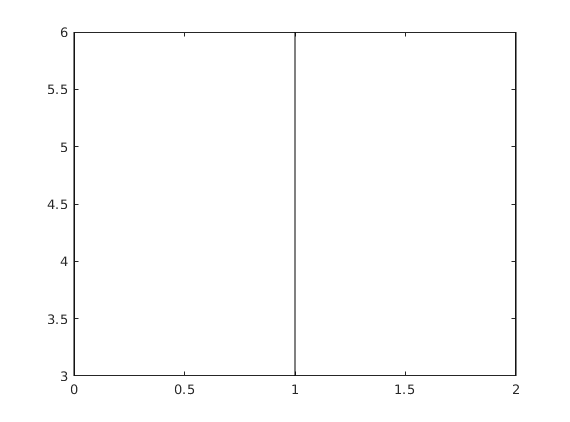
If plot(X,Y) has matrix argumens X,Y of the same size it plots rowwise: plot(X(i,:),Y(i,:)), i=1..m or columnwise plot(X(:,j),Y(:,j)), j=1..n This is a less documented feature. In this case Matlab seems to choose the way that is reasonable looking at the data (sounds a bit incredible). Anyway, it works here, a little confusing, though. Anyway, this procedure is very handy, when you know it.
hold on
[X' Y']
ans =
0 0 0 0 3 4 5 6
1 1 1 1 3 4 5 6
2 2 2 2 3 4 5 6
plot(X',Y','k') % Matlab operates columnwise % (Matlab is 'wise')
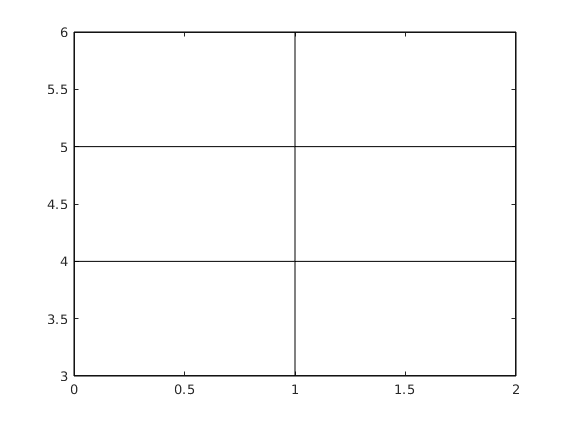
Look at X and Y as long column vectors side by side
[X(:) Y(:)]
ans =
0 3
0 4
0 5
0 6
1 3
1 4
1 5
1 6
2 3
2 4
2 5
2 6
plot(X(:),Y(:),'o')
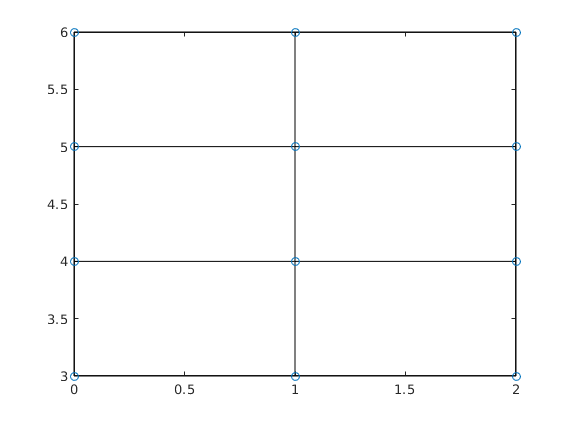
The gridlines can also be seen most easily in 3d by
mesh(x,y,0*Z) % You can look directly from above just rotating the figure % with your mouse. %
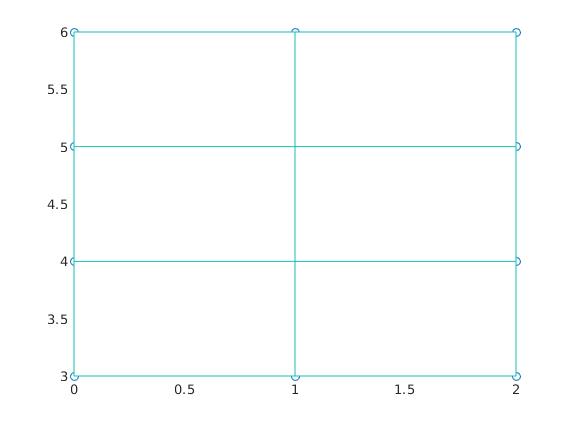
Example of surface plot
Above we considered the function f(x,y)=x y. Instead we could have any function of 2 variables f(x,y) Let's take for instance

figure x=linspace(-2*pi,2*pi,30); y=x; [X,Y]=meshgrid(x,y); Z=sin(1./sqrt(.1+X.^2+Y.^2)); mesh(x,y,Z)
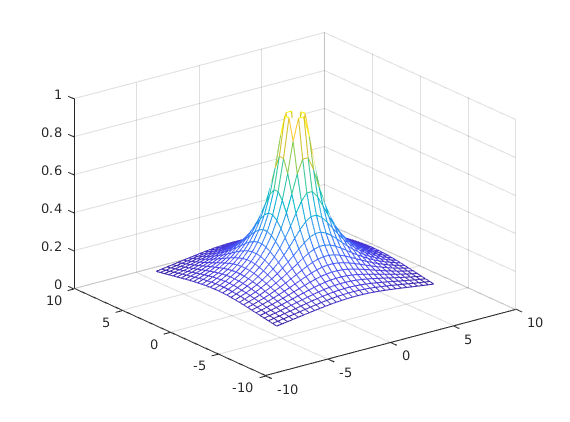
figure surfc(x,y,Z),colorbar xlabel('x-axis') ylabel('y-axis')
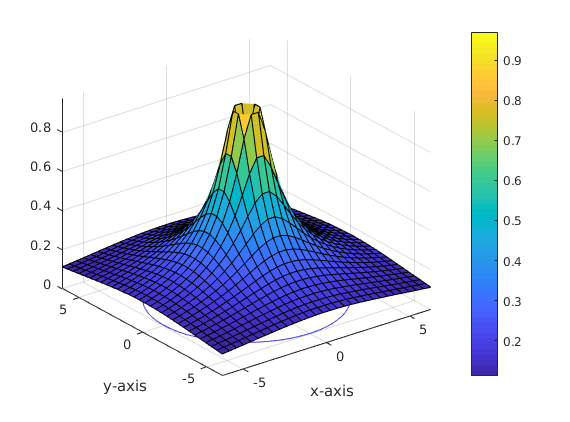
contour(x,y,Z,20)
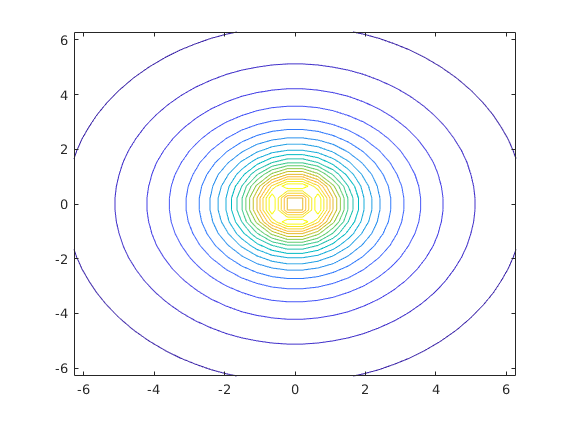
A fancy 3d-plot
Reference:
http://ubcmatlabguide.github.io/html/plottingAdvanced.html
f = @(x,y) exp(cos(sqrt(x.^2 + y.^2))); % Define a function of two variables d = -2*pi:0.1:2*pi; % domain for both x,y [X,Y] = meshgrid(d,d); % create a grid of points Z = f(X,Y); % evaluate f at every point on grid surf(X,Y,Z); shading interp; % interpolate between the points material dull; % alter the reflectance camlight(90,0); % add some light - see doc camlight alpha(0.8); % make slightly transparent box on; % same as set(gca,'box','on')
